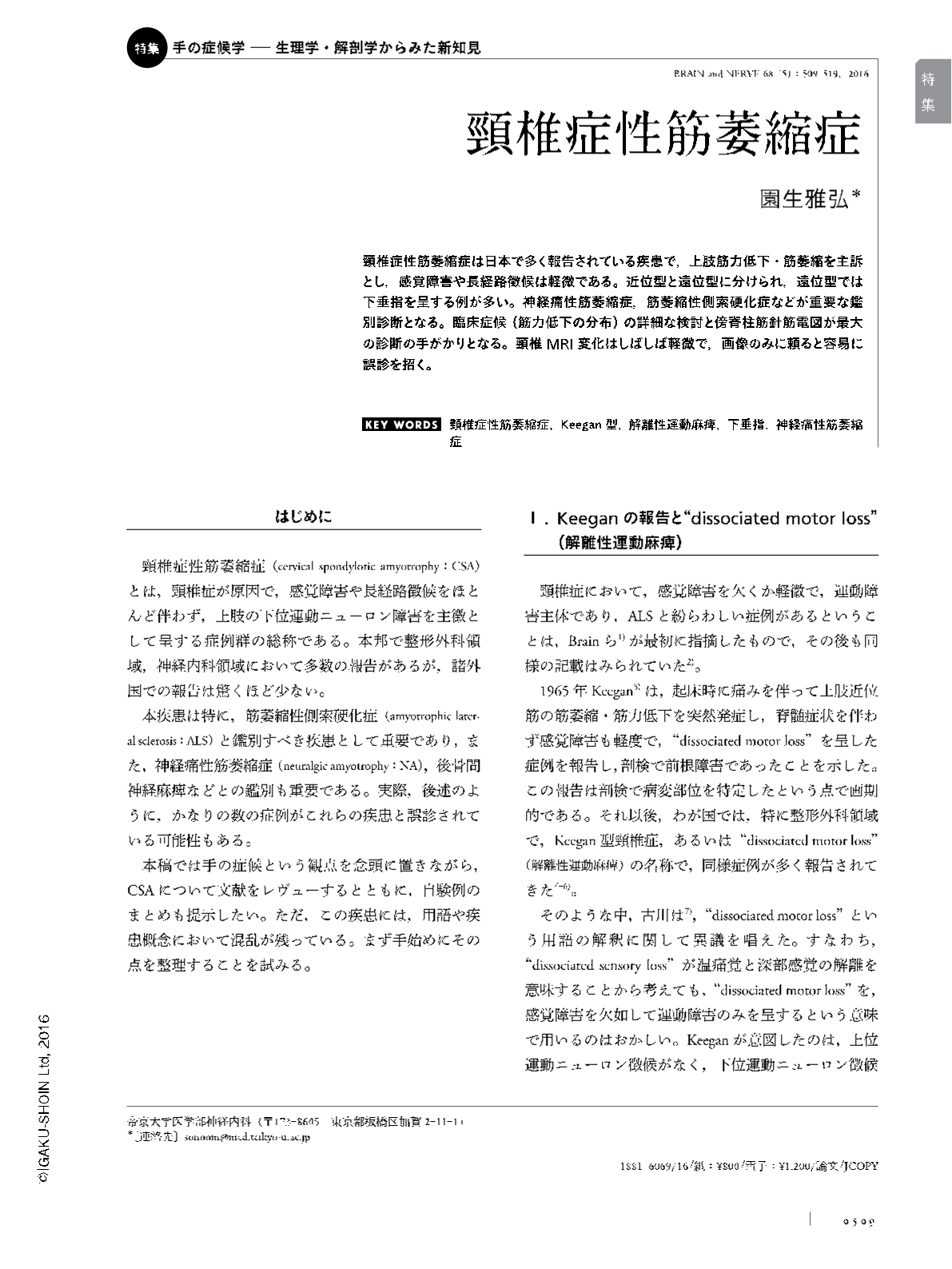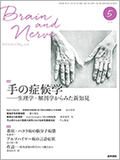Japanese
English
- 有料閲覧
- Abstract 文献概要
- 1ページ目 Look Inside
- 参考文献 Reference
- サイト内被引用 Cited by
頸椎症性筋萎縮症は日本で多く報告されている疾患で,上肢筋力低下・筋萎縮を主訴とし,感覚障害や長経路徴候は軽微である。近位型と遠位型に分けられ,遠位型では下垂指を呈する例が多い。神経痛性筋萎縮症,筋萎縮性側索硬化症などが重要な鑑別診断となる。臨床症候(筋力低下の分布)の詳細な検討と傍脊柱筋針筋電図が最大の診断の手がかりとなる。頸椎MRI変化はしばしば軽微で,画像のみに頼ると容易に誤診を招く。
Abstract
Keegan (1965) reported a patient who presented with “dissociated motor loss,” an acute paralysis of the upper extremity with minimal sensory signs and no long tract signs, and documented an anterior root lesion following autopsy. Sobue et al. (1975) reported similar cases using the term “cervical spondylotic amyotrophy (CSA),” but postulated pathology of the anterior horn. Although Keegan's “dissociated motor loss” surely referred to isolated motor paresis with no or minimal sensory signs, contrary to existing criticism, a more general term, CSA, should be preferred. CSA is divided into proximal and distal types. Distal CSA often presents with a drop finger, and thus may be misdiagnosed as posterior interosseous nerve palsy. Documentation of the involvement of ulnar muscles by clinical signs and EMG would lead to the diagnosis of distal CSA. Proximal CSA may be confused with neuralgic amyotrophy (NA), although the sparing of the serratus anterior and the stereotypic involvement of deltoid, infraspinatus, biceps brachii, and brachioradialis suggest CSA. Cervical MRI is not diagnostic in around half of CSA cases, and denervation in paraspinal EMG is a more sensitive test that can exclude NA. Amyotrophic lateral sclerosis is another important differential diagnosis for CSA.

Copyright © 2016, Igaku-Shoin Ltd. All rights reserved.


